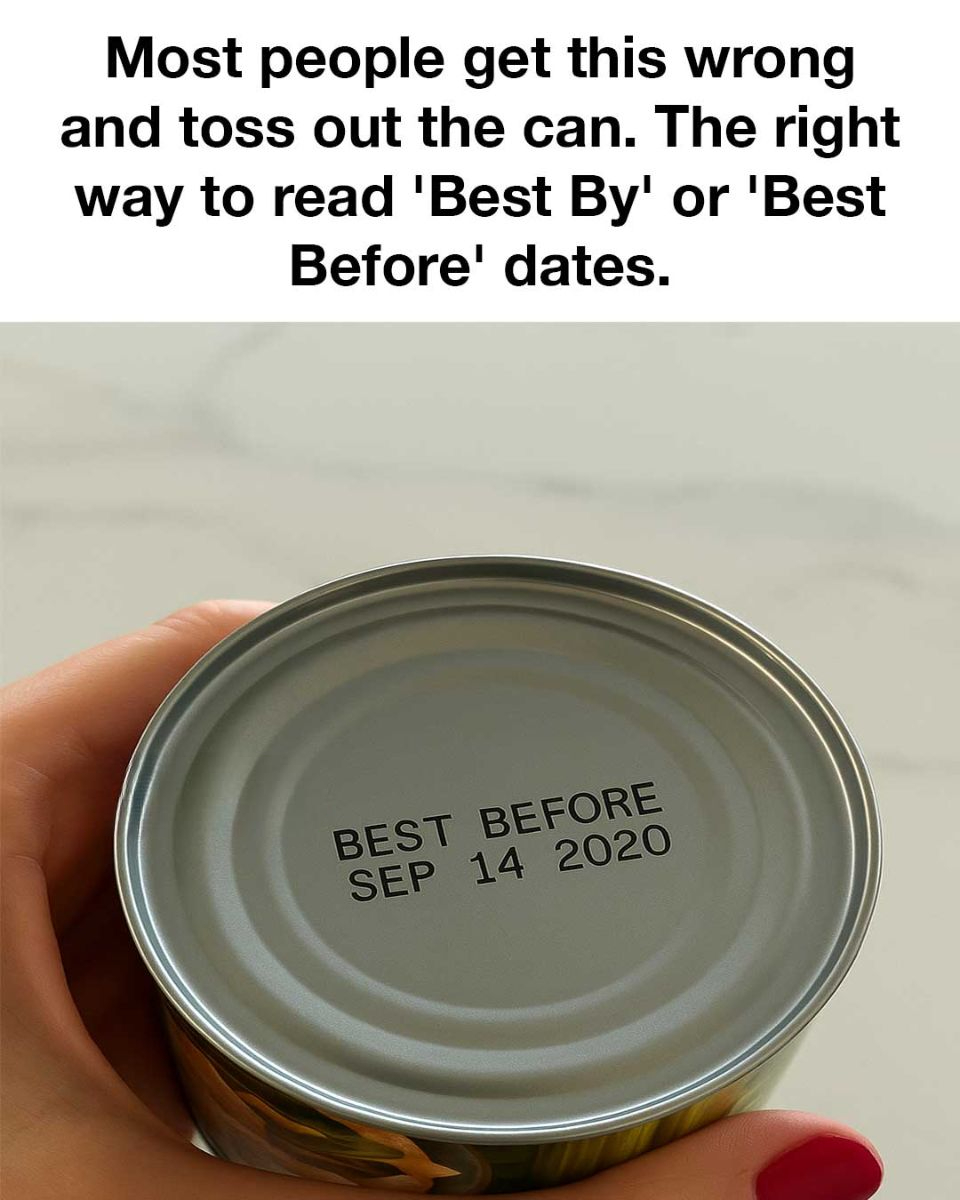Most people assume that the “Best By” or “Best Before” date printed on packaged foods is a strict expiration deadline, which leads many to toss out perfectly edible food. However, this common misunderstanding contributes to a staggering amount of food waste each year. In reality, these labels are not about safety—they’re about quality. Learning how to properly read and interpret these dates, especially on canned goods, can help reduce waste, save money, and encourage a more sustainable lifestyle.
 The primary purpose of a “Best By” date is to inform consumers when the product is expected to be at its best in terms of flavor, texture, and nutritional value. Manufacturers determine these dates based on testing that accounts for food type, packaging, and storage conditions. Importantly, these dates—aside from those found on infant formula—are not federally regulated in the U.S. That means they’re intended as guidelines, not hard-and-fast rules.
The primary purpose of a “Best By” date is to inform consumers when the product is expected to be at its best in terms of flavor, texture, and nutritional value. Manufacturers determine these dates based on testing that accounts for food type, packaging, and storage conditions. Importantly, these dates—aside from those found on infant formula—are not federally regulated in the U.S. That means they’re intended as guidelines, not hard-and-fast rules.
One of the biggest misconceptions is that food becomes dangerous immediately after the “Best By” date. While it’s true that freshness may decline over time, many items, especially shelf-stable ones like canned goods, remain safe long past this printed date if stored correctly and if there are no signs of spoilage. It’s crucial to understand the difference between “Best By” and “Use By” labels. “Best By” means the food will be at peak quality until that date, while “Use By” is more common on perishable items like meats and dairy and relates more directly to food safety. For those types of items, following the “Use By” date is recommended. But for canned goods, the story is different. If kept in a cool, dry place and the packaging remains intact, most canned foods can last months or even years beyond their “Best By” date. For example, canned vegetables may last an extra one to two years, canned soups and stews up to five years, and canned fruits around one year past the date. The key is knowing what to look for. Even if the date has passed, a canned item may still be safe.
First, visually inspect the can. If it’s bulging, leaking, heavily rusted, or has deep dents—especially near the seams—don’t use it. These are signs the food could be compromised. Next, open the can and smell the contents. If anything smells sour, metallic, or just “off,” discard it immediately. If it passes the visual and smell test, taste a small amount.
If the flavor is odd or unpleasant, it’s better to err on the side of caution and not eat it. How you store your canned goods makes a big difference in how long they last. Cans should be stored in a cool, dry place ideally between 50 and 70°F. Avoid keeping food in areas with high humidity like basements or warm environments such as garages, as these conditions can speed up deterioration. Also, try to protect canned foods from direct sunlight, which can degrade both the packaging and the contents inside over time. Beyond the pantry, it’s worth considering the larger impact of throwing away food based solely on misunderstood dates. In the United States, over 30% of all food is wasted each year. This not only costs consumers billions of dollars annually but also adds to landfill overuse and contributes significantly to greenhouse gas emissions. A major portion of this waste comes from food that was still safe but discarded because of confusion over labeling. To cut down on this kind of waste, practice better label literacy. First, stop treating “Best By” as a hard expiration. Instead, rotate your pantry by using the FIFO method—First In, First Out—so older items get used before newer ones. Only buy what you know you’ll use, especially when it comes to fresh or perishable products. If you notice a non-perishable item getting close to its “Best By” date and you know you won’t use it, consider donating it to a local food bank. Many food banks will accept items slightly past their printed dates as long as the food is still safe and the packaging is intact. In the end, being informed about what “Best By” and “Best Before” truly mean can help you make smarter choices in the kitchen. With a bit of attention to proper storage, regular pantry checks, and a better understanding of food labeling, you can safely extend the life of many products, avoid unnecessary waste, and contribute to a more sustainable household.





